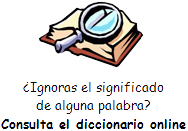|
Teachers Use Games for More Enjoyable Learning
Wordle has become one of the most popular online games in the United
States since it came out last October.
Players get six chances to guess and learn a five-letter word for the
day. Many are sharing their game results on social media, adding more
interest in the game.
Gamifying the classroom
Creative teachers have long found games could make their classes more
enjoyable for students. During the pandemic, many have looked for new
ways or games to help their students learn. It is part of a learning
theory called “gamification” to keep students’ interest.
Beyond Wordle, here are other games that help learners with different
subjects.
Mathematics
British data scientist Richard Mann of London was talking with his
daughter about the popularity of Wordle. He thought there should be a
game for people who like mathematics and developed Nerdle. It is a daily
game in which a player has six tries to guess a math solution.
Does it sound familiar? Math teachers note that a Nerdle player uses
logic, a careful way of thinking about something, to solve a math
problem. It is similar to how a Wordle player applies logic to guess a
word.
Geography
Do not confuse Wordle with Worldle. There is an extra letter ‘l” in
Worldle. French video game developer Antoine Teuf said he invented
Worldle in honor of that word game, Wordle.
Players guess a country based on its shape. They get six tries to guess
a country based on information about the country. Teuf first shared the
game on January 22. He said there are two million visits a day to the
game’s page a month later.
Other games, online services
Teachers of English see word games as a way for students to learn new
words. Other word games include Blooket and Flippity.
Teachers create quizzes in Blooket similar to the kinds of games
students play on mobile devices. They can look at results and see areas
that students can improve.
In Flippity, teachers can create flash cards, rewards, spelling quizzes,
memory games and word searches from a simple Google spreadsheet. It is
also a good tool for students to create their own projects.
There are several online services that teachers could use to “gamify”
learning. They include Kahoot!, Quizlet, Quizziz and Nearpod. All of
them “gamify” learning by creating competition among learners while
reviewing the content presented by teachers.
Teaching without a computer?
In many places, teachers and students do not have a computer. So,
English language teacher Larry Ferlazzo asked them to share their
language-learning games. Ferlazzo wrote about them in his blog. Here are
two of the games that teachers suggested:
Danielle Horne teaches at Helena College in Glen Forrest, Western
Australia. She said one of the games that her students love playing is
“hot or cold.”
In “hot or cold,” students hide something in the classroom while a
student, or searcher, is waiting outside. The students then say a word,
phrase, or sentence. They get louder when the searcher gets nearer to
the object and softer when the searcher is more distant. Horne said to
be prepared for quite a bit of noise though!
Eva Pors is a Danish high school teacher. Her students play “questions
and answers” to learn new words or vocabulary.
Pors write words or phrases on small pieces of paper and divides
students into groups of four. Within a group, student A picks a piece of
paper with a word or phrase on it and asks questions that will make
student B say the exact word or phrase on the paper.
For example, with the word “milk,” Student A would ask, “What do you put
on your cereal in the morning?” Student B has one minute to try to
answer as many words or phrases as possible. The other two students in
the group will then take over for one minute. And the team with the most
correct guesses wins the game. |
![]() ).
Utiliza el botón derecho del ratón y "guardar enlace" para descargar el
fichero a tu PC, tablet, Smartphone, etc.
).
Utiliza el botón derecho del ratón y "guardar enlace" para descargar el
fichero a tu PC, tablet, Smartphone, etc.![]() Escucha el audio
Escucha el audio



